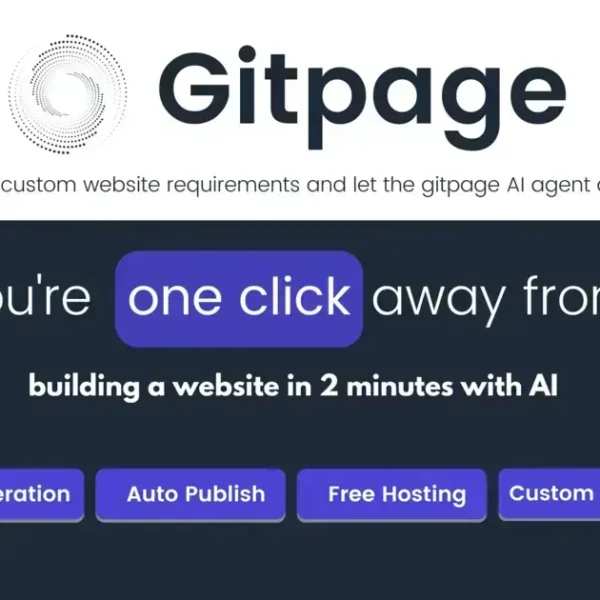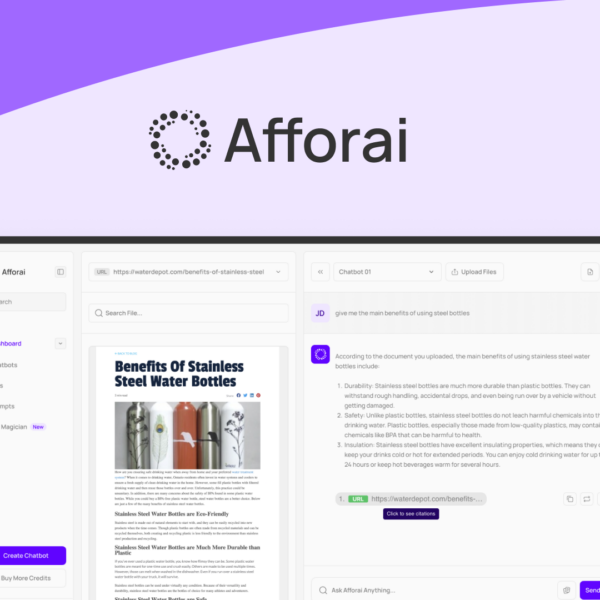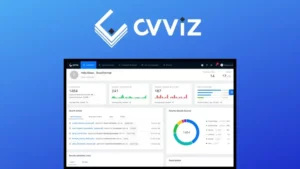Lead generation for software companies involves strategic methods such as content marketing, SEO, and effective follow-ups. By utilizing the right tools and avoiding common mistakes, businesses can attract quality leads and enhance conversion rates for sustainable growth.
Lead generation for software companies is more than just a buzzword; it’s a crucial aspect of the modern tech landscape. In an industry where competition is fierce and innovation is constant, knowing how to attract and retain clients can be the difference between success and oblivion. In this article, we will delve into the essential strategies that can elevate your lead generation game, showcasing tools and techniques that’ll help you stand out.
Understanding Lead Generation for Software Companies
Understanding lead generation for software companies involves recognizing the processes that attract potential customers and convert them into sales. It is essential to provide valuable content and offers that resonate with your target audience. This process starts with identifying who your ideal customers are and understanding their needs and pain points.
What is Lead Generation?
Lead generation is the act of identifying and attracting prospective clients into your sales funnel. For software companies, this means using various digital marketing strategies to capture interest and information from potential customers. An effective lead generation strategy should ensure that leads are not just numerous but also relevant to your product offerings.
Why is Lead Generation Important?
For software companies, having a consistent flow of leads is critical for growth. It helps develop a robust customer base and can lead to increased revenue. By effectively generating leads, businesses can better focus their marketing efforts on nurturing those relationships, ultimately converting leads into loyal customers.
Types of Lead Generation Techniques
Some common techniques involve content marketing, SEO, social media marketing, and email outreach. Content marketing, such as blogs and webinars, positions your company as an authority in the software sector. SEO ensures that potential customers can find your website easily, while social media provides platforms for engaging with audiences directly. Email outreach helps maintain a relationship with potential leads through regular updates and personalized communication.
Understanding Your Target Audience
To generate quality leads, software companies must focus on understanding their ideal client. Create buyer personas to represent different segments of your audience. This understanding allows for tailored marketing strategies that address specific challenges and showcase how your software can solve those issues, leading to higher conversion rates.
Overall, grasping the nuances of lead generation enables software companies to create more effective marketing strategies that not only attract potential customers but also retain them in the long run.
Top Strategies for Effective Lead Generation

Top strategies for effective lead generation are essential for software companies aiming to grow their client base. Implementing the right methods can streamline your outreach and enhance your conversion rates.
1. Content Marketing
Creating valuable content such as blogs, whitepapers, and eBooks can attract potential buyers. By addressing their pain points and providing solutions, you position your software as a valuable resource in their decision-making process.
2. Search Engine Optimization (SEO)
SEO is key to improving your online visibility. Optimize your website and content with relevant keywords to ensure that your software solutions are easily discoverable by search engines. Use both on-page and off-page SEO techniques to boost your rankings.
3. Social Media Engagement
Engaging actively with your audience on platforms like LinkedIn, Twitter, and Facebook can be a game-changer. Share insights, answer questions, and encourage discussions to create a community around your software. Regular posts and interactions can nurture relationships that lead to conversions.
4. Email Marketing
Email marketing remains one of the most effective lead generation strategies. Develop tailored email campaigns targeting different segments of your audience. Share updates, offers, and educational content that pique their interest and lead them to learn more about your products.
5. Webinars and Online Demos
Hosting webinars and providing online demos of your software can significantly enhance understanding and interest. These interactive sessions allow potential users to see the value of your software first-hand, increasing the likelihood of conversion.
By incorporating these strategies into your lead generation efforts, software companies can not only attract more leads but also foster deeper relationships with prospects, leading to higher success rates.
Tools to Enhance Lead Generation Efforts
Tools to enhance lead generation efforts are crucial for software companies that wish to streamline their processes and improve the quality of leads. By leveraging the right tools, businesses can automate tasks and analyze data efficiently.
1. Customer Relationship Management (CRM) Software
CRM software helps manage interactions with current and potential customers. It efficiently tracks communications, schedules follow-ups, and stores customer data, allowing your team to focus on nurturing leads without getting overwhelmed.
2. Email Marketing Platforms
Email marketing tools, such as Mailchimp or HubSpot, allow you to design targeted campaigns to engage your leads effectively. They help in segmenting your audience, automating email sequences, and tracking metrics like open and click rates for better performance analysis.
3. Lead Generation Software
Tools like LinkedIn Sales Navigator or Apollo can assist in identifying and reaching out to potential leads. These tools enable you to filter prospects based on industry, job title, and other criteria, ensuring you connect with the right individuals.
4. Analytics Tools
Using analytics platforms like Google Analytics provides insights into how visitors interact with your website. Understanding user behavior helps refine your lead generation strategy by identifying what works and what needs improvement.
5. Chatbots and Live Chat Systems
Incorporating chatbots or live chat on your website allows for real-time engagement with visitors. These tools can answer questions immediately and gather information from potential leads, enhancing the chances of conversion.
Incorporating these tools into your lead generation strategy can significantly improve efficiency and effectiveness, enabling software companies to attract and convert leads more successfully.
Measuring Success in Lead Generation

Measuring success in lead generation is crucial for software companies to understand the effectiveness of their marketing strategies. By evaluating performance, companies can refine their approaches and improve conversion rates.
1. Key Performance Indicators (KPIs)
Identifying relevant KPIs is vital. Common KPIs for lead generation include the number of leads generated, conversion rates, and cost per lead. Tracking these metrics helps assess how well your lead generation efforts align with your overall business goals.
2. Lead Quality Assessment
Not all leads are created equal. Assessing the quality of leads is important. Look at factors such as the engagement level and how well the leads match your ideal customer profile. High-quality leads are more likely to convert into paying customers.
3. Return on Investment (ROI)
Calculating ROI for your lead generation campaigns gives you a clear picture of financial performance. Analyze costs versus revenue generated from converted leads. A positive ROI indicates effective lead generation, while a negative one suggests the need for adjustments.
4. Tracking Tools and Software
Utilizing tools like Google Analytics and CRM platforms provides insights into how leads interact with your content and where they come from. These tools help in understanding buyer behavior and refining targeting strategies.
5. Regular Monitoring and Reporting
Establish a routine of monitoring your lead generation efforts. Regular reporting allows you to identify trends early and pivot your strategies as needed. Use this data to inform future campaigns and promote continuous improvement.
By focusing on these aspects of measuring success in lead generation, software companies can optimize their marketing efforts and drive sustainable growth.
Common Mistakes in Lead Generation
Common mistakes in lead generation can hinder software companies from achieving their marketing goals. Avoiding these pitfalls is essential for optimizing lead generation efforts.
1. Not Defining a Target Audience
One of the biggest mistakes is failing to identify and understand your target audience. Without clear buyer personas, marketing efforts may become generic and inefficient. Focus on understanding the needs, preferences, and pain points of your ideal customers.
2. Ignoring Follow-Ups
Leads can easily go cold if not followed up promptly. Software companies should implement a robust follow-up system. This can include automated emails or personal outreach to maintain engagement and build relationships with potential clients.
3. Lack of Quality Content
Content is crucial for capturing interest. Relying solely on promotional materials without providing valuable, informative content can alienate potential leads. Create articles, webinars, or tutorials that address relevant topics and showcase your expertise.
4. Focusing Solely on Quantity Over Quality
While generating a high volume of leads may seem beneficial, it’s the quality that counts. Focusing too much on attracting numerous leads without filtering for relevance can reduce overall conversion rates. Aim for quality leads that fit your customer profile.
5. Not Using Analytics
Ignoring data and analytics can lead to misguided strategies. Software companies must track and analyze lead generation efforts to understand what works and what doesn’t. Use this data to refine your tactics continuously.
Avoiding these common mistakes in lead generation can significantly enhance your strategy and increase your chances of converting leads into loyal customers.
Bringing It All Together for Successful Lead Generation
Effective lead generation is vital for the success of software companies. By understanding the key strategies, utilizing the right tools, and measuring success accurately, businesses can attract and convert quality leads.
Avoiding common mistakes will also help streamline efforts and enhance overall performance. Remember, it’s not just about generating leads; it’s about nurturing relationships and providing value to potential customers.
By implementing these practices, your software company can achieve sustainable growth and stand out in a competitive market.
FAQ – Frequently Asked Questions about Lead Generation for Software Companies
What are the key strategies for effective lead generation?
Key strategies include content marketing, search engine optimization (SEO), social media engagement, email marketing, and hosting webinars or demos.
How can I measure the success of my lead generation efforts?
Success can be measured by tracking key performance indicators (KPIs), such as the number of leads generated, conversion rates, and return on investment (ROI).
What tools should I use to enhance my lead generation?
Useful tools include customer relationship management (CRM) software, email marketing platforms, lead generation software, and analytics tools like Google Analytics.
What common mistakes should I avoid in lead generation?
Common mistakes include not defining a target audience, neglecting follow-ups, lacking quality content, focusing on quantity over quality, and ignoring analytics.
How important is it to define my target audience?
Defining your target audience is crucial as it helps tailor your marketing efforts effectively, ensuring you attract leads that are more likely to convert.
Can automation tools improve my lead generation process?
Yes, automation tools can streamline follow-ups, segment email lists, and collect data, making your lead generation efforts more efficient.




